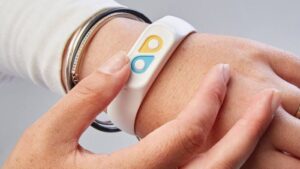Robotics in Elder Care: Enhancing Quality of Life

Robotics in elder care is rapidly emerging as a crucial technology that has the potential to transform how we support aging populations. With the world’s elderly demographic growing, the demand for efficient, compassionate, and cost-effective care is becoming a significant challenge. Robots, equipped with advanced AI and machine learning, are being integrated into elder care to improve quality of life, alleviate caregiver shortages, and provide more personalized care.
At the core of robotics in elder care is the ability to assist with daily living activities. For seniors, tasks that were once routine can become increasingly difficult due to mobility issues, cognitive decline, or chronic health conditions. Robots designed for elder care can help with activities such as bathing, dressing, feeding, and medication reminders, allowing seniors to maintain a degree of independence. These robots can be programmed to perform tasks on a schedule or respond to specific needs, reducing the physical burden on caregivers while ensuring that essential tasks are carried out.
Companionship is another vital area where robots are making a difference in elder care. Loneliness and social isolation are significant issues among older adults, particularly those who live alone or in assisted living facilities. Social robots, designed to engage in conversation, offer companionship, and even participate in simple activities like games or music, can help reduce feelings of loneliness and depression. These robots can also monitor the emotional state of the elderly, identifying signs of distress or changes in behavior that may require human intervention.
In addition to assisting with physical and emotional needs, robots in elder care are increasingly being used to monitor health. Equipped with sensors and connected to health management systems, these robots can track vital signs, remind seniors to take their medications, and alert caregivers or medical professionals to any concerning changes. This type of continuous monitoring can be particularly beneficial for managing chronic conditions such as diabetes, heart disease, or arthritis. By collecting and analyzing health data, robots can also help prevent emergencies by identifying patterns or anomalies before they escalate.
One of the most promising developments in this field is the use of AI-powered robots for cognitive support. Cognitive decline, including dementia and Alzheimer’s disease, affects millions of elderly individuals. Robots equipped with cognitive training programs can engage seniors in memory exercises, puzzles, and other activities designed to stimulate brain function and slow cognitive deterioration. These robots can adapt to the user’s abilities, providing personalized challenges and support, which can enhance mental acuity and improve overall quality of life.
Beyond individual care, robots are also playing a role in the broader elder care ecosystem. In nursing homes and assisted living facilities, robots are being used to handle tasks such as transporting supplies, delivering meals, and cleaning, allowing human staff to focus more on direct care. This automation helps reduce the workload on caregivers, who are often stretched thin due to staffing shortages. By handling repetitive or physically demanding tasks, robots can improve the efficiency of elder care facilities and ensure that seniors receive the attention they need from human caregivers.
Robotics in elder care is not without its challenges. One of the primary concerns is ensuring that these technologies are designed to be user-friendly for seniors, many of whom may not be familiar with advanced technology. Intuitive interfaces, voice recognition, and personalized settings are critical for making robots accessible to elderly users. Additionally, there are ethical considerations regarding the level of interaction between robots and humans. While robots can provide essential assistance and companionship, they should not replace human contact entirely. Finding the right balance between robotic support and human care is essential to ensuring that seniors receive both the technical help they need and the emotional connection they deserve.
Another challenge is cost. While robotics technology is advancing rapidly, it can still be prohibitively expensive for many families and care facilities. Developing affordable solutions and integrating them into existing care systems will be key to making robotic elder care more widely accessible. Policymakers, healthcare providers, and technology developers will need to collaborate to create sustainable models for integrating robotics into elder care.
Robotics holds great promise for enhancing the quality of life for seniors by providing physical, emotional, and cognitive support. From assisting with daily tasks to offering companionship and monitoring health, robots are becoming invaluable tools in elder care. However, their success will depend on ensuring that they complement, rather than replace, human caregivers and that they are accessible to all seniors in need. As the population ages, robotics will play an increasingly important role in shaping the future of elder care, making it more efficient, compassionate, and responsive to the needs of the elderly.



